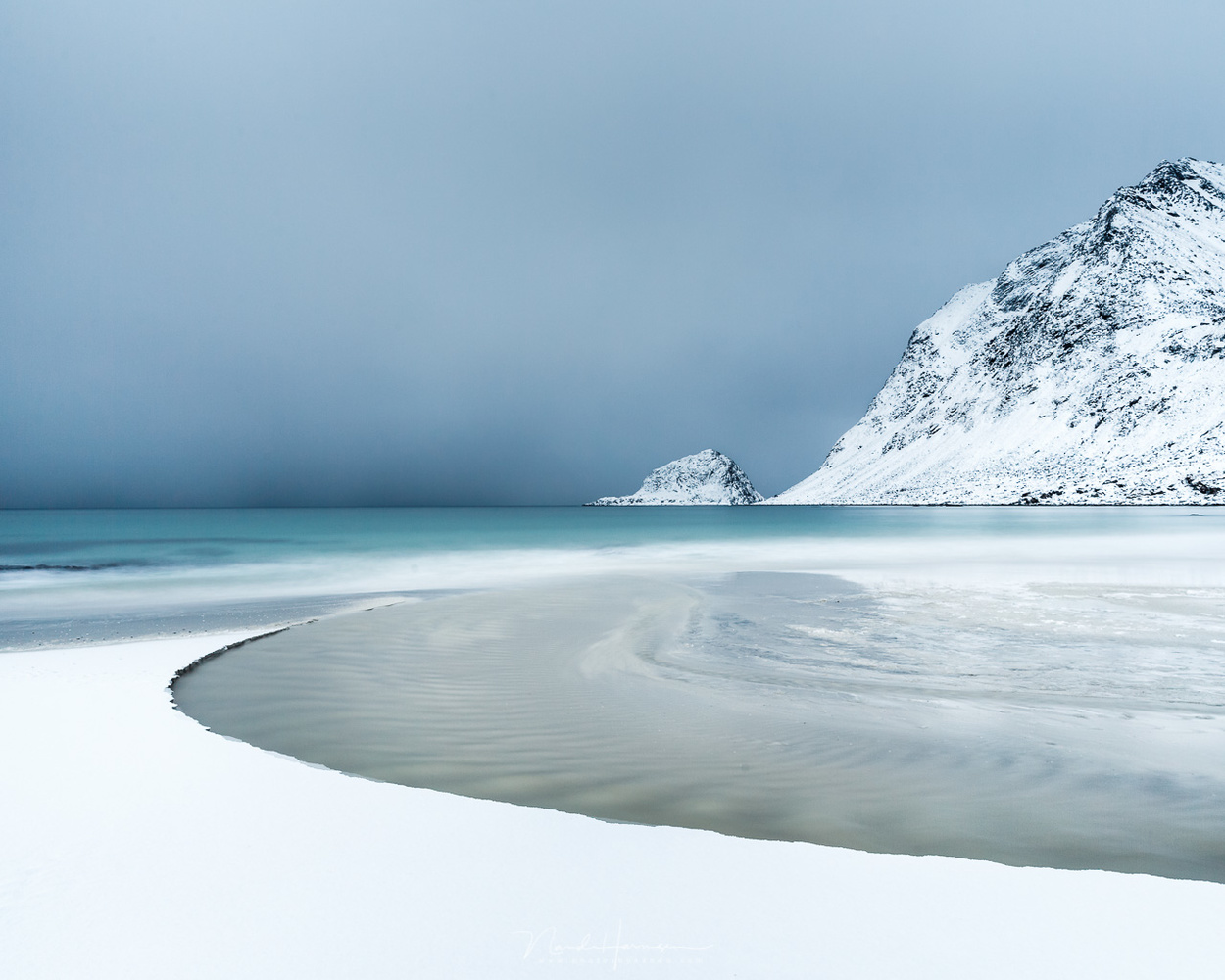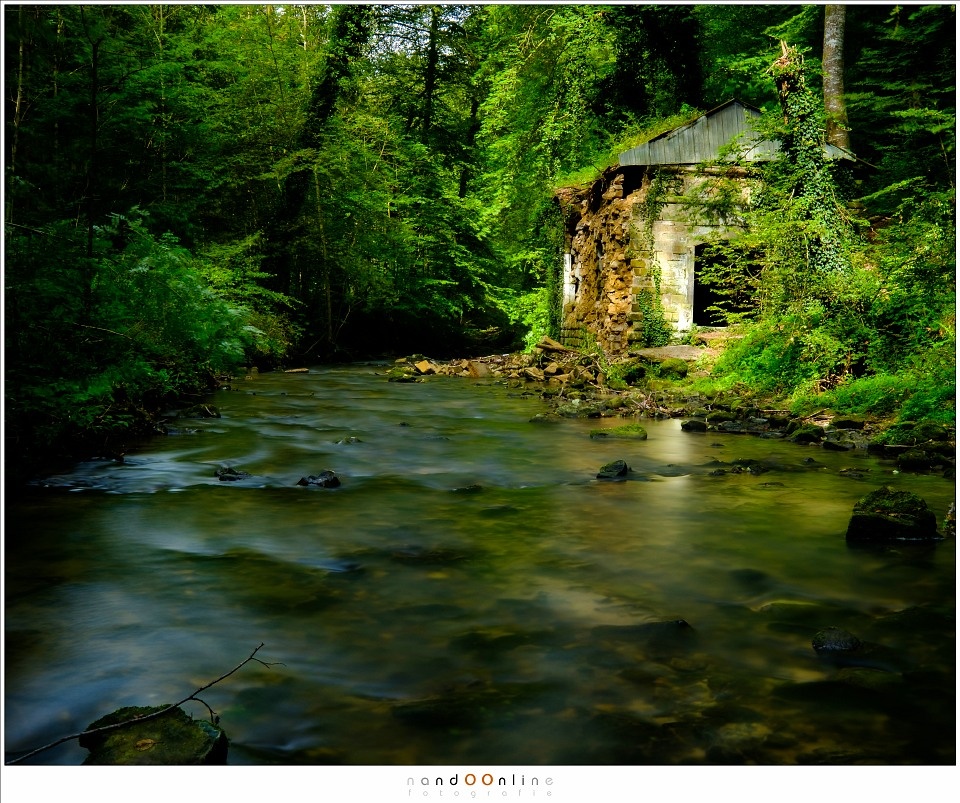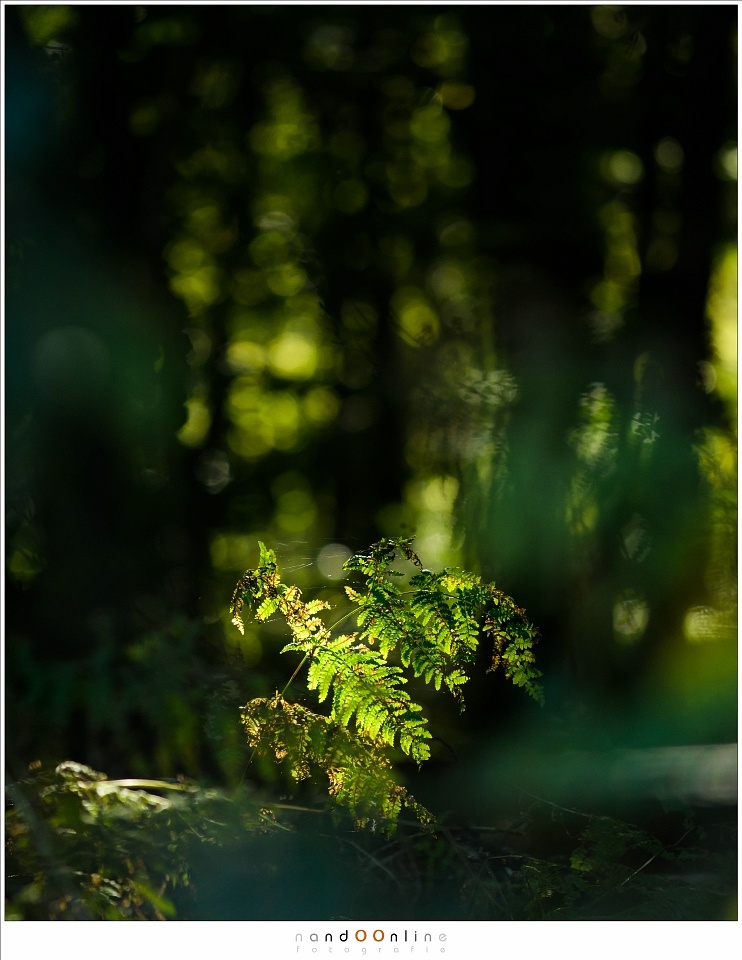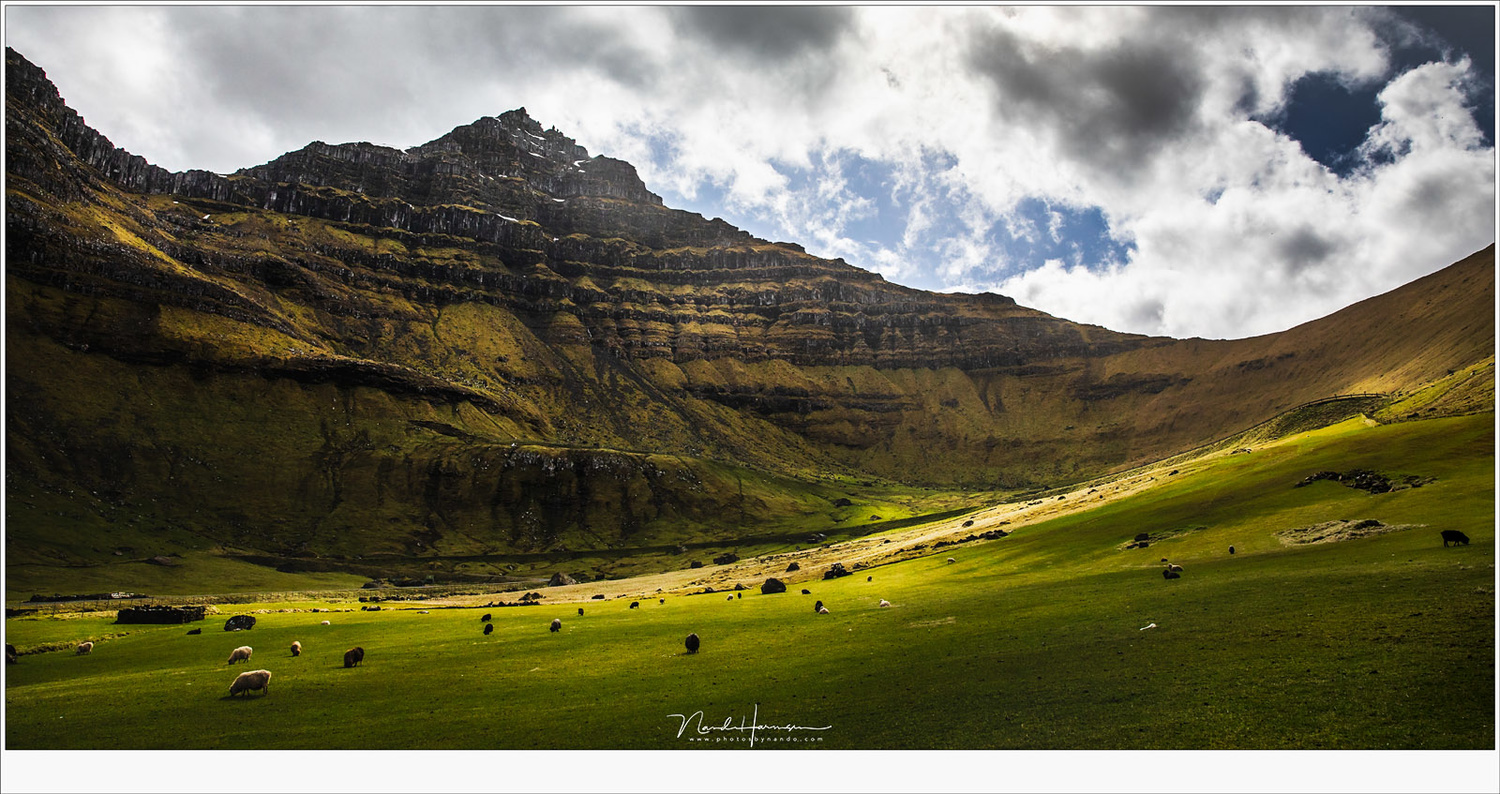Everyone who is photographing landscapes knows how important light is. With the right light situations, a boring landscape can transform into something magical. It is not only choosing the golden hour, but also waiting for the right moment. You need to be patient.
We all know light is the key element in landscape photography. Often, the golden hour is the most attractive moment of the day, when the light is soft and the shadows are long. But landscape photography is not limited to these few hours, although a lot of photographers think so. Also during daytime, wonderful photos can be made. But you have to wait for the right moment.

Haukland, the famous beach at Lofoten at high noon. Not a cloud in the sky and relatively harsh light makes the photo a bit boring. Even the composition, leading lines, and long exposure cannot make it more attractive. (EOS 5D4 19mm | ISO 50 | f/11 | 30 sec with Lee Big Stopper)
Of course, shooting a landscape under a clear blue sky can produce boring results and end up being nothing more than a registration of the scenery. The photo of the famous Haukland Beach is a good example. Although I tried to find some nice leading lines and a good composition, the image is not that attractive. Even the long exposure with a 10-stop neutral density filter cannot change this.
But harsh daylight can also bring opportunities. When we were walking on the beach at Côte d’Opale, I noticed a nice rock next to a tide pool with the cretaceous white cliffs leading towards the horizon. Those cliffs casted a shadow on the beach and on the rock. Because the sun was moving higher into the sky, the shadows became shorter. So, I had to wait for a while. After five minutes, the rock emerged from the shadows, and a nice composition was possible. As a bonus, I got some people in the frame, which gave a sense of perspective.
Back to Haukland Beach at Lofoten. I showed the beach at daylight with a clear blue sky. There were no interesting shadows available, so you have to wait for different circumstances. I also photographed the same beach at daytime, just before a massive snowstorm came upon us. I used a similar leading line and long exposure, but thanks to the weather situation, the photo became so much more attractive.

Haukland beach during high noon with a snowstorm on its way. The situation is much different from the previous photo of Haukland I showed. Again, some leading lines and longer exposure, but this one is much more interesting. (EOS 1D X 24mm | ISO100 | f/8 | 30 sec with Lee Big Stopper)
This example of Haukland beach clearly shows how weather situations can make a lot of difference. It is always a good habit to keep an eye on the weather.
For daytime photography, I often prefer fluffy clouds in a blue sky and some sunlight in between. We, from the Netherlands, call these Dutch Skies. The clouds will produce a playful game of light and shadow, which you can work with. You have to keep an eye on how the light moves across the land and wait until your subject is lit by sunlight. Never take a picture the moment you have found nice scenery, but wait until the light and shadow parts are exactly the way you want. The next few examples will illustrate this.
In these examples, I just had to wait a few minutes for the light to hit my subject. You can clearly see how much of a difference it makes. This also works in forests, where the location of the light can turn the forest into something magical, even at high noon.
Every before and after images in the examples has the same post-processing, so you see exactly how the light has changed just by waiting. Keep an eye on the movement of the light, and you need to be patient. Sometimes, it takes a few seconds or minutes, sometimes it doesn't happen at all. But when it does, the difference in appearance will make it worthwhile.
I leave you with a few examples of daytime landscapes, with light situations that are captured just by waiting for the right moment.

With these clouds, amazing light situations can happen. The light captured this tree, but I needed a bit patience and a bit of luck. I increased the contrast in post-processing to my liking (EOS 1D X 70mm | ISO 100 | f/8 | 1/50)

The famous ruins next to the river Black Ernst in Luxembourg, caught in sunlight while the rest is in shadows thanks to the hills and trees. Now the ruin is the eye-catcher. It was a matter of waiting for the right moment. (Fujifilm X-Pro2 24mm | ISO 200 | f/16 | 30 sec with 3-stop ND)

Forests are amazing when the sun is high in the sky. Patches of light and shadow are a playground for the photographer. It is perfect for photography with a long focal length and a small depth of field, giving the image a dreamy look. (Nikon D500 180mm | ISO 800 | f/4 | 1/500)

An opening in the canopy allows the light to reach the forest floor. You can have amazing light situations with a bit of sunlight. Keep an eye on the sky and the light surrounding your subject to kind of predict what will happen. (Nikon D500 105mm | f/4 | 1/25)

Mountains can cast really long shadows, especially at the end of the afternoon. These can be emphasized by a cloudy sky. If you keep an eye for patches of light running across the mountain, you can predict their paths. Then, it is a matter of patience. (Sony a9 400mm | ISO 100 | f/8 | 1/80)

Sometimes, a light patch can appear unexpectedly, like this meadow at the Faroe Islands. In that case, you have to be quick, because it vanishes in a few seconds. You can be certain it won't happen again soon. When these skies occur, you know it can happen. (EOS 5D IV 24mm | ISO400 | f/8 | 1/5000)

When a cloudy sky opens op, you can expect nice light to appear. Just be ready for it, just like this moment at Ravin Corbœuf in the French Auvergne. I have emphasized the contrast in post-processing to my liking. (EOS M50 41mm | ISO 100 | f/11 | 1/160)

You cannot predict everything, but you have to be ready. When I visited the Faroe Islands this year, the sunlight illuminated the famous mountain of Tintholmur for a few seconds. I was ready to capture this moment that lasted for a few seconds. (EOS 5D IV 35mm | ISO 250 | f/9 | 1/160)

Of course, the golden hour is a wonderful moment to shoot landscapes. But also for this moment, the light can change suddenly. This golden light lasted long enough for a few photos before it disappeared again. (Panasonic Lumix GX9 17mm | ISO 640 | f/8 | 1/125)
Often, I anticipated the moment by looking at the movement of the light, and sometimes it was just luck to have captured it before the light disappeared. I hope it will inspire you to go out, even during daytime, and play with light and shadow.















There is an optimal time for photographs.
Landscape, Portrait, Wildlife, Sports, etc..
Wait on it !!
Good article! Great photos! I use time that I'm waiting for "just the right light" to relax and enjoy the beauty of my surroundings, even if the light itself isn't "perfect" at that moment. It helps take me away from the "busyness" of my life in the city.
Yes, like being out fishing. I would guess that anglers and photographers have a lot in common.
You are right... it is almost a moment of zen. ;)
I do love the waiting. It gives you time to enjoy the surroundings, to look at the details in the landscape and perhaps discover new compositions. And it gives time to relax
That is a drawback indeed. But it doesn't have to be on remote locations. Just read my article about the landscapes just around the corner.
Great article Nando, I also try to make understand my fellow landscape photographers to be patient. Patience is key, and I think I make better photographs when I slow down the pace. I also noticed that taking the time to go back to a same location multiple times helps me make better photographs. This way, I get more opportunities to get the optimal conditions. I love your shots of the Opale Coast and of Tintholmur btw...Thank you for this insightfull article !
You're welcome, Stef. Thanks for the kind words
Hope to meet you someday at the Opal Coast :)
A friend of mine was livecasting his shoot of Mesa Arch in Canyonlands, Utah. A dozen or more photographers waited on what turned out to be a disappointing sunrise. Everyone except he and his buddy left, likely no shots worth sharing as the sun was blocked by the clouds. Then, well after classic golden hour, the risen sun peeked through the clouds, and that magical glow appeared under the arch. They got some very fine photos for their patience. Serendipity is a photographer's best kept secret. But she can be fickle. Good article. Thanks for sharing.
Good example of the rewards for being patient. Am I the only one who feels that the digital age has caused people to be less patient? Just grab a shot and 'fix' it in PP? I glad I still shoot film mostly. It has always caused me to wait for the right conditions. To me, the three most important things in landscape photography are: location, timing and patience. Just my thoughts.
Perhaps also the digital age outside of photography -- social media, computers, etc., all make us more impatient. It certainly does that to me.
How I make myself slow down for landscapes -- I carry a tripod. Yes, I'm supposed to carry one anyway for landscapes, but for me the use of a tripod makes me more thoughtful in my approach. The time it takes to set up and move forces me to ask, "why am I standing here?" and "why do I want to take this picture now?" Perhaps there's a better spot, perhaps there's better light coming.
The author and the commenters here all get it -- slow down. Be patient. Understand light.
Exactly. A tripod is a must for landscapes....at some point or other.
I don't agree it is a must, but it can help slowing you down. I love using a tripod.
Well...ok...it may not be a must for everyone but it mostly is for me.
I think you're right. I have seen it happen during my masterclasses; people who think they can fix a mediocre image by Lightroom or PHotoshop. Shoot fast and a lot, never wait, and photoshop the hell out of it. :)
Nice story and a good example not to rush everything. Thanks for sharing it